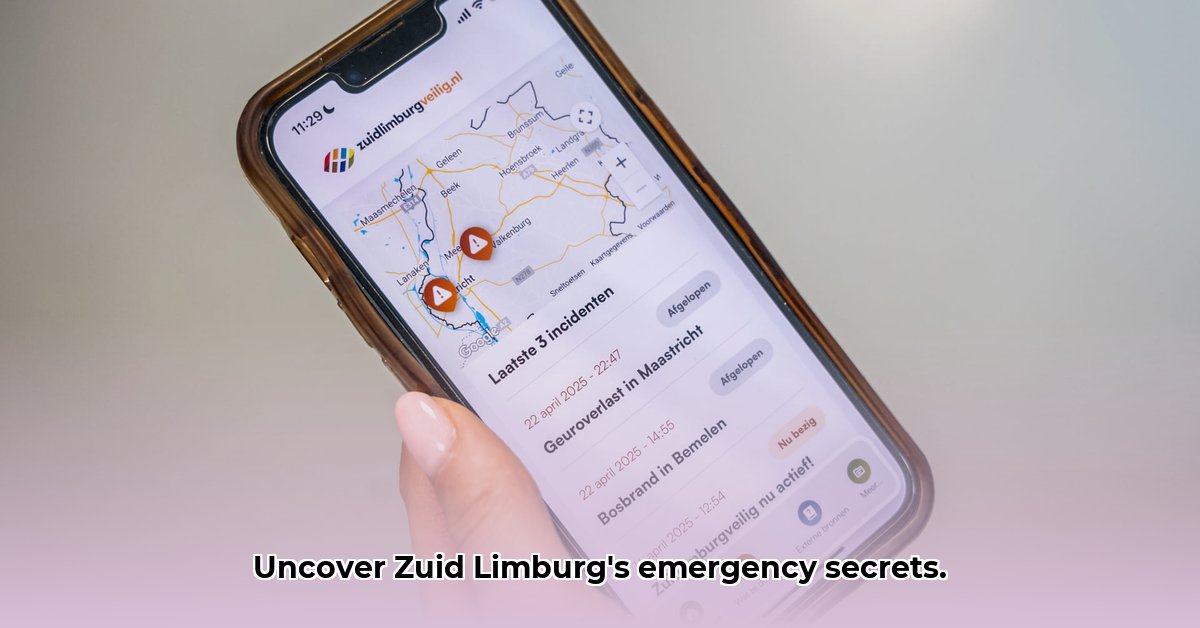
Understanding the P2000 Zuid Limburg Emergency Network
The P2000 Zuid Limburg system is the backbone of emergency response in the region, acting as a high-speed digital network connecting dispatchers with fire, ambulance, and other emergency services. This near-instantaneous communication system updates every ten seconds, a crucial element in minimising response times and saving lives. However, like any complex system, it faces challenges that require attention. Isn't efficient communication the cornerstone of any effective emergency response? The system relies on accurate and timely information relayed through a precise system of codes.
The core function of P2000 Zuid Limburg is straightforward: when you dial 112, the system pinpoints your location, identifies the emergency type, and dispatches the closest available responders. The system's effectiveness hinges on the speed and accuracy of this process, with every second counting in critical situations. But how does the system guarantee such rapid response? The speed depends on a specific system of codes, a special “language” of its own. However, this system, while aiming for rapid communication, also introduces potential delays due to code interpretation.
Challenges and Areas for Improvement in P2000 Zuid Limburg
While generally effective, the P2000 Zuid Limburg system has areas needing improvement. One major challenge is the lack of complete integration with police communication networks. This information gap can hinder coordinated responses, creating potentially dangerous situations for first responders. Imagine firefighters battling a blaze without knowing if the area is secure. How can we improve inter-agency collaboration in such crisis situations?
Another significant issue is the use of codes and abbreviations in communication. While efficient in theory, this approach can lead to misunderstandings and delays. A transition to clearer, standardized language protocols would greatly reduce this risk. What's the point of a fast system if the messages are misinterpreted? A system that uses plain language is safer.
Furthermore, relying on "capcodes" (codes identifying specific responders) to allocate tasks introduces another challenge. The accuracy and speed of this process significantly impact response times, and the lack of comprehensive data on this aspect makes it difficult to analyze system bottlenecks – a vital piece of information for improvement. Isn't data transparency key to optimising system efficiency?
The initial emergency call is obviously critical. Any inaccuracy or misunderstanding at this initial phase can negatively impact the entire response chain. The system’s efficiency depends heavily on the quality of the initial report.
Pivotal Points for P2000 Zuid Limburg Improvement
- Improved Inter-Agency Integration: Seamless communication between police, fire, and ambulance services is paramount for effective emergency response.
- Clearer Communication Protocols: Moving away from cryptic codes and abbreviations in favour of plain language will significantly enhance situational awareness and reduce response times.
- Data-Driven Analysis: Open access to anonymised data will enable better analysis to identify and address system weaknesses.
Proposed Solutions and a Pathway Forward
Improving the P2000 Zuid Limburg system demands a multi-pronged approach, combining short-term and long-term strategies.
Short-Term Goals (0-1 year):
Streamline Communication: Implement clearer, standardized messaging protocols, minimizing jargon and abbreviations. This simple step can significantly improve communication efficiency.
Enhance Data Accessibility: Increase public access to anonymized data to allow for extensive research and identification of system improvements, while fully protecting sensitive information.
Long-Term Goals (3-5 years):
Achieve Full System Integration: Complete integration with all relevant emergency services will eliminate communication silos and ensure coordinated response.
Standardize Data Formats: Develop and implement a uniform data format to ease analysis and reporting, allowing for easier tracking of key metrics.
Collaborative Effort: A Shared Responsibility
Improving P2000 Zuid Limburg requires a collaborative effort from multiple stakeholders:
Emergency Services: First responders must lead the charge in standardizing procedures and communication.
Data Analysts/Researchers: Experts are crucial for data analysis, identifying bottlenecks and proposing data-driven solutions.
Government/Regulators: Regulatory bodies provide resources, facilitate research, and set policies for interoperability.
The Public: Accurate and complete reporting of emergencies is essential for the system's efficiency.
Risk Assessment and Mitigation Strategies
Addressing potential risks is crucial. Below is a summary of key risks and their mitigation strategies.
| Component | Risk Type | Likelihood | Impact | Mitigation Strategy |
|---|---|---|---|---|
| Capcode System | Misallocation/Error | Medium | High | Improved assignment procedures, rigorous testing, and dispatcher training. |
| Message Clarity | Ambiguity | High | Medium | Standardize terminology; Implement automated checks; Provide staff training. |
| Data Accessibility | Lack of Public Data | High | Medium | Implement data anonymization and a phased public release of anonymized data. |
| Police Integration | Information Silo | High | High | Develop integrated communication platforms; Encourage inter-agency training and collaboration. |
| System Outage | System Failure | Low | Critical | Implement redundant systems; Schedule regular maintenance; Develop a robust disaster recovery plan. |
The P2000 Zuid Limburg system is vital for emergency response. By addressing its challenges through collaboration, we can ensure its continued effectiveness in safeguarding the community. The future of this life-saving system depends on continuous improvement and research.